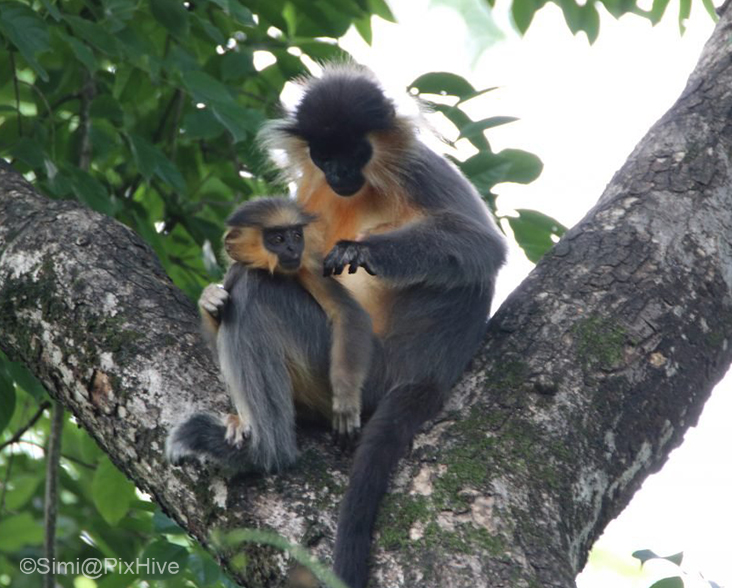CAPPED LANGUR
Species Data
Class: Mammalia
Order: Primates
Family: Cercopithecidae
Scientific Name: Trachypithecus pileatus
IUCN Red List status: Vulnerable
Description
The Capped Langur is a forest-dwelling primate native to Bangladesh, Bhutan, India and Myanmar.
Their name is inspired by the dark patch of fur that sits atop their head, resembling a cap. The dorsal side of the body ranges from golden orange to yellow in colour, giving way to a long brown or grey tail. Capped by a black face, ears and feet, their bodies weigh around 10-14kg and are 50-70cm tall.
There are four subspecies: Trachypithecus pileatus pileatus, Trachypithecus pileatus durga, Trachypithecus pileatus brahma, and Trachypithecus pileatus tenebricus.
Behaviour
Capped Langurs are predominantly arboreal and usually found leaping through the forest canopy where they also forage, rest, feed and play. They are a vocal species and have several different calls within their repertoire. These primates are diurnal and mostly folivorous – they are most active during the day and their diet mainly consists of leaves.
They live in groups made up of roughly seven females and one male, and females often share the responsibility of looking after each other’s infants.


Habitat
Capped Langur are found in lowland, wet, evergreen rainforest and temperate forest. The largest population is in Assam State, India, but they have also been documented in other areas of northeastern India such as the Meghalaya State, as well as across the border in Bangladesh, Bhutan and northwestern Myanmar.
Threats and Conservation
These primates, a species reliant on a healthy forest to survive, have witnessed population drops of 30% across their entire range over the past 40 years. Fuelled by rampant habitat loss, this sweeping decline of Capper Langur numbers is expected by the IUCN to continue over the next three generations if conservation action is not deployed at scale.
Since 2003, World Land Trust supporters have been making a difference for this species, helping our partner Wildlife Trust of India to protect and expand biodiversity corridors used by these primates in the Garo Hills of Meghalaya State. Starting in 2022, we’ll be funding the protection of tens of thousands more acres to expand the network, in a project where local people will own and benefit from the reserves being created.
